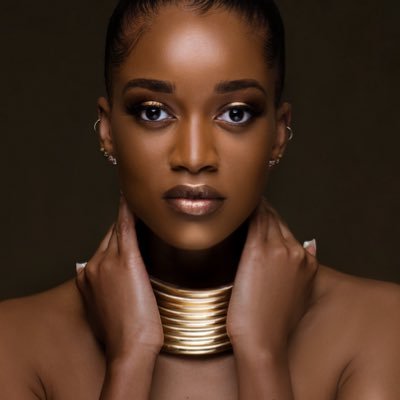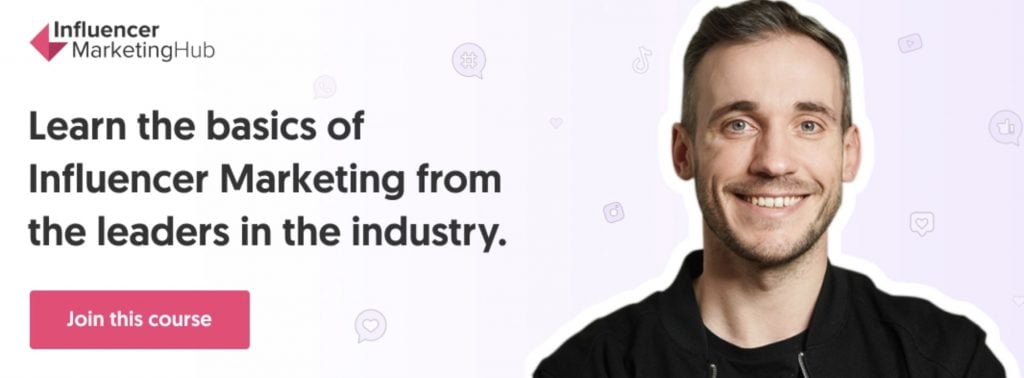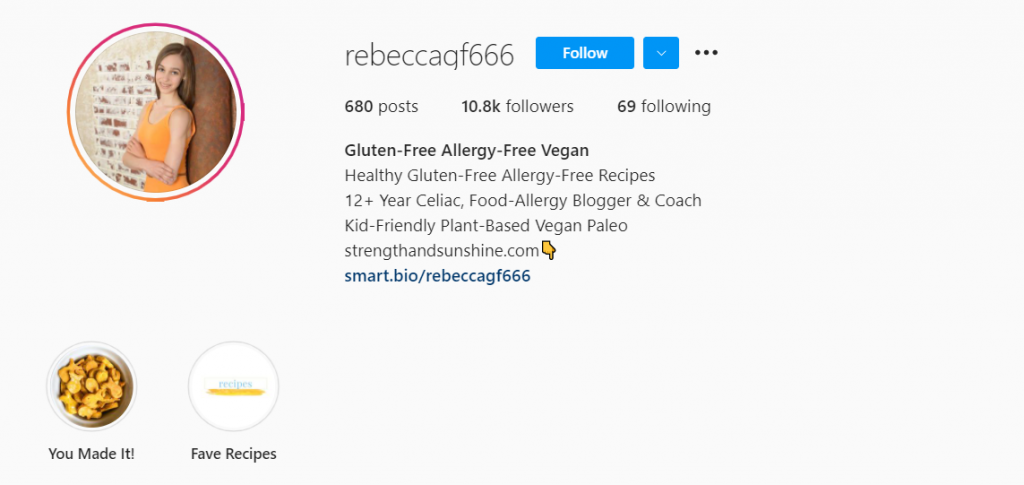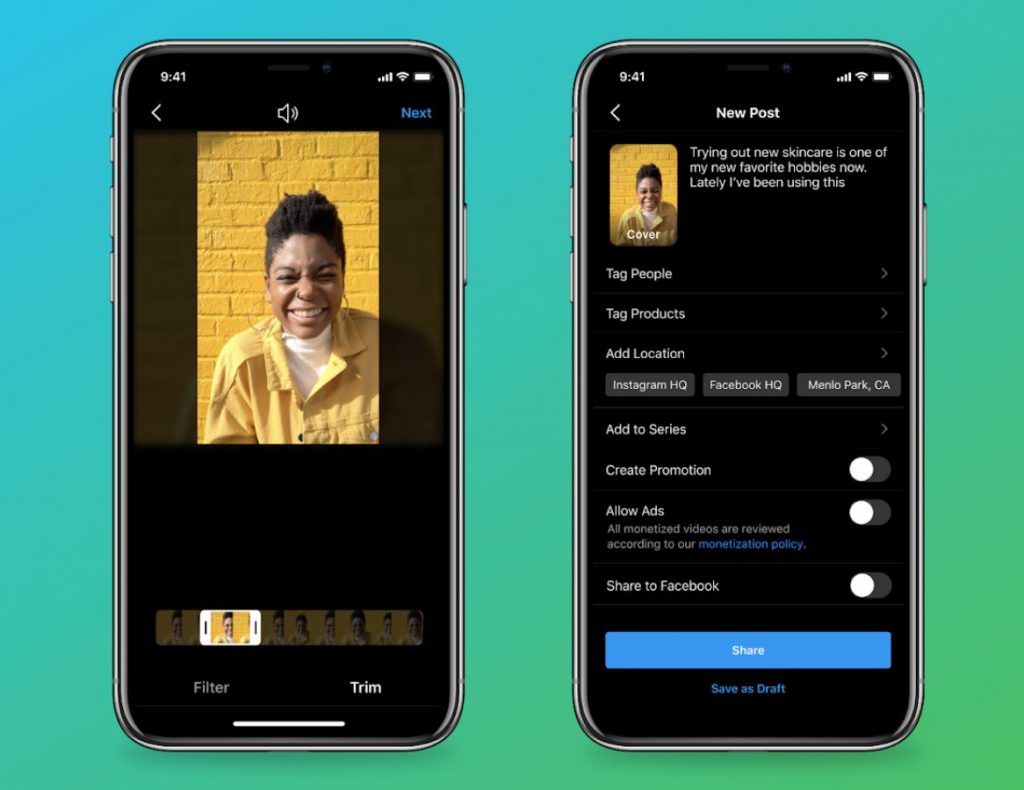If you want to know what influencer marketing trends 2022 will bring your way, you’ve come to the right place. Influencer marketing is already big, and it’s only going to get bigger. Every year brings about new social media platforms, new types of content, and new ways brands can engage with their potential customers. The best influencers stay on top of the trends so they can offer brands what they need to shine.

Influencer marketing was a $13 billion industry in 2021.After years like 2020 and 2021, in which brands found themselves scrambling to update their marketing and advertising campaigns to resonate with an audience suddenly stuck at home, 2022 offers tons of promise. Not only have businesses learned that they could operate virtually, but more and more consumers have turned to the internet to meet their eCommerce needs. And, since several traditional marketing methods were incompatible with the effects of a global pandemic, brands sought out content creators and influencers who are adept at creating reactive content
As popularity, demand, and marketing spend increase for influencer marketing, it’s important to pay attention to these influencer marketing trends for 2022 so you’re focusing attention and ad dollars on the right things.
1. A Greater Emphasis on Following Preferred Creators Across Multiple Platforms
Although many creators have a favorite social network, they typically operate across multiple platforms. While this isn’t new, the difference now is that these creators have “super fans” who interact with them everywhere they appear.
This means that successful creators tend to have large audiences interacting seamlessly across their accounts. They aren’t just Instagrammers or YouTubers, for example. Instead, they see themselves as specialist creators, showcasing their work to fans across the Web. And often, they will select the best platform for a purpose.
ImperialJedi has made videos about the city-building game Cities Skylines since the game was released (ten expansion packs ago) in 2015. Initially, he uploaded videos on YouTube to a relatively modest but enthusiastic audience. Over the past six years, he’s built this audience up to nearly 90,000 subscribers. He also operates a Twitter account, which has grown more slowly, to reach just under 2,500 followers. Despite its more modest success, the Twitter account helps spread the news about upcoming and new YouTube videos. In addition, like many gamers, ImperialJedi streams live on Twitch. He began making streams about two hours long, once or twice a week. However, he now streams up to six hours in a session, three times per week. Like many creators, ImperialJedi uses his multiple social platforms for different purposes – they are all parts of a whole. The last component (currently) is Patreon, where fans can show their support financially.
2. Influencers Will Become Critical to Many Affiliate Programs
Until recently, most people viewed influencer marketing and affiliate marketing as two different activities. But in reality, they are very much interrelated. Both activities involve an “outsider” promoting and encouraging their supporters to buy somebody’s products. Indeed, one of the platforms, Refersion, already recognizes the connection and doubles as an affiliate and influencer platform. As our reviewer of that platform observed, “The line between affiliates and influencers is becoming increasingly blurred as influencer platforms integrate with e-commerce more and more, moving beyond simple ‘awareness’ campaigns to actually drive sales.”
In the past, most affiliates were traditional bloggers or publishers. They would include product demonstrations, walkthroughs, and reviews on their sites. In addition, they often promoted multiple, sometimes competing, affiliate programs to increase their chances of getting referral fees from a broader range of readers.
We’re now seeing a change, however. Influencers are now recommending products to their followers – but typically only those they use or trust themselves. They don’t want to alienate their followers by promoting products they don’t believe in. As a result, brands are discovering that influencers can be true champions of their products. Influencers will often give personal testimonials, demonstrations, and calls to action when talking about a brand. They can help their followers through the entire sales funnel, from awareness to consideration and even purchase. And they do all this in an authentic, personal way.
As many affiliates don’t have the fervent audiences of influencers, they are starting to work with influencers to promote their affiliate products.
3. Continued Movement from Text and Images to Audio and Video Content
Bandwidth has improved worldwide in recent years. 5G is spreading across the globe, and fiber internet is commonplace in many countries. As a result, people are consuming more video and audio content nowadays. Creators on Twitch, YouTube, and even podcasts are becoming more influential.
As we mentioned above, many of these creators appear on multiple platforms, with a degree of overlapping audience. For example, Logan Paul is a viral YouTuber with 23.2 million subscribers to his channel. However, he also podcasts, and his Impaulsive channel has over 3.5 million subscribers.
We have previously looked at Leading Marketing Podcasts Every Influencer Professional Should Try Out. You will find podcasts on virtually every topic imaginable. Podcasts are particularly valuable to people who are auditory learners. You may be reluctant to spend time reading a book or article but happy to listen to some experts give advice in a podcast.
Text and images aren’t yet dead – Instagram is still one of the most popular social sites. But expect to see more emphasis on video and audio content over the next year. TikTok and YouTube are on the rise, and podcasting is increasing in popularity. Even old staples like Facebook and Twitter now emphasize sharing videos.
4. Live Shopping Will Become a Greater Part of Influencer Campaigns
Live shopping became popular over 2021, and this will continue into 2022. Influencers and other key thought leaders promote products to their communities on their favorite social platforms, using live video and interactive content. Projections suggest projected sales through live streaming are likely to reach $500 billion by 2023.
Amazon, Facebook, TikTok, and Instagram have all developed livestream shopping tools and partnerships. In addition, many of TikTok’s most prominent influencers have participated in shoppable livestream events. Expect to see many more of these over the next year.
5. A Greater Emphasis on Diversity and Representation in Influencer Marketing
We are seeing a greater emphasis on diversity and representation in society of late. So, it comes as no surprise to see this flow into influencer marketing. You even find influencer agencies devoted to increasing representation. Shade, for example, has a mission of “helping creators of color become self-employed while doing what they love.” Shade now has a roster of over 1,000 black and brown creators ranging from chefs and authors to actors and comedians.
Similarly, Black Girl Digital is a premium digital marketing and influencer agency that specializes in the black female audience. They are a certified minority and women-owned corporation by the city and state of New York. Their mission is to be a solution to equity wage disparities for Black and Multicultural women in the influencer marketing industry. Their goal is to inspire brands to want to build deeper partnerships with women of color and to empower female influencers of color to build a sustainable business doing what they love
Nowadays, both influencers and consumers analyze branded messages and campaigns to make sure everyone is represented. Brands can shift their corporate cultures to focus on inclusivity and remove any traces of exclusivity.
6. Micro and Nano Influencers Will Get More Love
There are different types of influencers, from nano influencers with just a few thousand followers to celebrity influencers with millions. According to a 2019 report from Later and Fohr, micro-influencers, particularly those with fewer than 25,000 followers, have the highest engagement rates at around 7%. Considering that engagement rates on Instagram have been declining, influencers with an engaged following are getting a closer look from businesses, even with fewer followers. By focusing on nano and micro-influencers, brands will be able to stretch their influencer marketing budgets while still working with influencers that are deeply connected to their audiences. Influencers will benefit from partnerships with an increasing number of brands.

7. Brands Will Look for Ongoing Partnerships Instead of One-Off Projects
Throughout 2022, expect brands and influencers to join together for long-term, ongoing projects rather than one-off sponsored posts. There are multiple reasons for this shift, but it ultimately comes down to this: it takes time to make a sale. Even influencers with the most engaged audiences will have trouble making any real contribution when commissioned for a single sponsored post. If you want to capitalize on this influencer marketing trend, we recommend creating packages that you can sell to brands seeking your services that include several sponsored posts over a period of time, much like what they would tend to do when running Facebook ads or ads on other platforms. It can also help to join an influencer marketing network to give yourself some legitimacy.
8. New Social Media Platforms—and Types of Influencer Content—Will Pop Up
If the last two Covid-affected years (2020 and 2021) have taught us anything, it’s that we always have room for more social media platforms. TikTok had stellar years due, in large part, to the pandemic that swept the globe and kept people indoors with little to do. But TikTok isn’t the only new social app to come recently. The exclusive, audio-based social app Clubhouse (no longer invite-only) and Reels (Instagram’s answer to TikTok) came on the scene in 2020. While no new platforms gained a hold in 2021, there will undoubtedly be new social networks just around the corner.
When TikTok took off in early 2020, influencers were right there with it, amassing followers on the platform and partnering with brands to create sponsored posts and ads. There’s no doubt that TikTok’s popularity will continue to surge throughout 2022 with both influencers and brands alike. Platforms have also taken lessons from life in a global pandemic to heart, making it easier for brands to create and amplify branded content and consumers to shop on the platforms. Those trends will continue throughout 2022.
In addition to the new social media platforms, we’ll start seeing new and experimental forms of media along with a big push towards AI-driving influencer marketing platforms. CGI influencers have already started to have a moment. As technology advances, influencers will come up with even more types of highly shareable content with the potential for virality.
9. Performance-Based Deals Will Increase
Performance-based influencer marketing will likely increase as brands and influencers seek out long-term partnerships. This means that clients will expect influencers to deliver on their promises, such as a specific number of sales or clicks. If you’re an influencer confronted with a performance-based contract, you might want to consider turning it into ongoing royalties instead of accepting a single payment. You’ll also want to be diligent in your contract review before signing to make sure you know what you’re agreeing to before guaranteeing a specific return.
10. Influencers Will Become More Specialized
We’ve already seen influencers carving out niches for themselves, and that’s an influencer marketing trend that shows no signs of changing. Influencers will continue to develop expertise in their niche or industry, making them even more sought after by brands in those verticals. As an influencer, it might be time to consider what industries you’re most passionate about and start courting partnerships with brands that make sense for the direction you choose to go. Here’s an example of a specialized influencer (just check out the bio!):
Source: instagram.com
As influencers become more specialized, we’ll likely see a shift in the language that we use. We’re already seeing some influencers opt for being called “creators” or “content creators” instead. Since so many influencers are true artists—photographers, videographers, writers, etc.—it’s not surprising that they’d want to be known for what they really do instead of being lumped together as “influencers” or “internet celebrities.” We think they can be both but be on the lookout for these fundamental changes in verbiage.
11. Influencer Collaborations Will Increase
Influencer marketing trends indicate that 2022 will bring us more connections and collaborations between influencers. We’ve already seen influencer houses become a thing, and it’s highly likely there will be more of that as influencer networks seek ways to increase influencer marketing campaigns and earn more return on their efforts.
12. Planning and Data Will Rule
As we mentioned earlier, performance-based contracts and deals will increase, which means planning and data will play an important role in influencer marketing for 2022. Now that brands and influencers are more comfortable working together, you’re going to see more collaboration between brands and influencers in planning campaigns and a lot more interest in tracking the social media marketing metrics that let brands know the influencer they’ve found is worth what they’re paying them. While influencer networks already have some analytics and reporting in place, solo influencers will need to understand what social media metrics are important so they can deliver on promises.
13. Video Content Will Increase (Even More) In Popularity
Yes, we know. Every year for at least the last eight years, video content has been on everyone’s list of not just influencer marketing trends but marketing trends in general. And there’s a good reason for that. People just love video. With the increasing popularity of TikTok and the introduction of Instagram Reels, we’re going to be seeing more video content than ever. Plus, IGTV (now Instagram Video) is just sitting there, waiting for Instagram to let loose the rain of ad revenue that everyone is expecting once they stop testing and let ads go live on the platform. In late 2021, Instagram renamed IGTV Ads as Instagram In-Stream video ads. Creators can monetize their long-form content, and brands can reach audiences engaging with long-form video.
Source: business.instagram.com
The point is, even with platforms like YouTube, Facebook, TikTok, Instagram Reels, Instagram Video, and many more, consumers are barely getting their itch for video scratched. On Facebook alone, the number of users watching live video increased 50% in early 2020. Sure, there was a global pandemic and lockdowns going on, but a 50% increase is huge.
14. Authenticity Will Be the Watchword
For the past few years, there’s been a powerful pull for “authentic” content. This means influencers have to be careful with the content they create for brands to make sure that the products they take on will resonate with their audiences. Of course, this is also something that brands need to watch out for. Even the most engaging influencers aren’t going to be able to whip their followers into a frenzy over a product that they just don’t care about. It won’t benefit the brand trying to make it work, and the influencer will likely lose credibility in the eyes of their audience.
Instead, influencers and brands should seek partnerships only with other influencers and brands whose audiences overlap with theirs. Blatantly sponsored posts themselves aren’t the problem, despite what some social media marketing experts would have you believe. You don’t have to forgo production value or makeup to make your sponsored posts feel more authentic. What makes sponsored content authentic is a genuine sense of excitement about the brand and the product you’re talking about. And this can come across no matter whether or not you’re just sitting in your room or recording on a yacht, unless you’re doing a sponsored post for a yacht-builder, in which case recording on a yacht would make a lot more sense.
What we tend to lose sight of when talking about the demand for authentic content is what we really want from the content. For most audiences, that means deeper connections with the influencers they follow along with value-driven content. Instead of a standard sponsored post that’s modeled after a TV ad, why not try doing a Q&A about the brand or product you’re sponsoring or a video that shows what it’s like to use it? You can even talk about the things you don’t love about a brand or product as long as you make sure your followers know that the product, even with its shortcomings, is still the best. The bonus for influencers is that your audience will trust you more. For brands, it’ll show your integrity. And integrity is endearing.
15. Cause and Issue Marketing Will Continue to Grow
2020 and 2021 have brought us much more in the way of social activism, and a lot of influencers and platforms worked to highlight the lack of diversity and equality in influencer marketing. Blackout days became a regular occurrence, drawing attention to how platforms are or are not representing certain populations. Instagram and TikTok, in particular, were brought into the spotlight for being everything from anti-black to anti-fat to anti-sex work. While there are miles to go before any social media platform can truly be lauded for its inclusiveness and celebration of diversity, 2021 finally pushed them in that direction more so than any previous time.
This drive toward diversity and inclusion will have an impact on brands and the way they choose influencers to partner with. But that’s just the start of what’s to come. While we’ll finally start seeing a more diverse selection of influencers, brands will also need to change how they do business as a whole to build diversity and inclusion into every aspect of their brand. More and more, brands will be pressed to take a stand—more than symbolically—on social justice and political topics that they’ve been allowed to shy away from in the past. It should come as no surprise that influencers will get that pressure, too, and will be expected to be more discerning of the brands they partner with.
16. Social Commerce Will Bring New Sponsorship Opportunities
In 2021, brands were forced to get creative with how they connected with shoppers. Brick-and-mortar stores scrambled to embrace eCommerce, and eCommerce stores, suddenly finding themselves with more competitors, had to find ways to offer shoppers better and easier ways to buy. The year basically forced more brands to embrace new technology faster—and likewise forced the creators of new technology to fast-track their inventions.
As such, we’ve seen new opportunities for influencer marketing and brand sponsorships through social commerce. Shoppable videos and shoppable posts have created a seamless user experience from influencer content to brand channels, as well as farther-reaching eCommerce solutions. In 2022, influencer marketers should expect those trends to continue and seek partnerships with brands ready to include shoppable content in their influencer marketing campaigns.
17. Employee-Driven Content Will Increase
An influencer marketing trend for 2022 that stems from the demand for more authentic content is the desire to see employee-driven or employee-based content increase. We’ve already seen how user-generated content can significantly impact sales and how brands are perceived; it only makes sense for brands to begin treating their own employees as influencers through employee advocacy programs.
We’ve already seen how this works for brands like Macy’s. With its Style Crew, Macy’s offers incentives and financial rewards to employees who use Macy’s products in their everyday lives if sharing that content leads to sales. This works for Macy’s employees and the company itself because consumers are fascinated by seeing “how the sausage gets made.” There’s a reason why the video of a Wendy’s employee making a Baconator got more than 3 million views after Wendy’s reposted it. People want to know what goes on behind the scenes at a company. Giving employees the go-ahead to share that content just makes sense.@wendysputtin’ in work 🔥 #fyp#foryou#wendys @ricky.federici♬ original sound – Wendy’s
18. Paid Advertising Will Be Key for Broad Reach
The last influencer marketing trend on our list for 2022 is all about advertising. Yes, we realize that paid ads are typically not used in conjunction with influencer marketing campaigns. However, brands and influencers will both benefit from the paid amplification of the content created by influencers. Using the fine-tuned targeting available on Facebook Ads or through the advertising tools for other social media platforms, brands will be able to push out high-quality influencer content to the people who care about seeing it, without relying on social media algorithms to make it happen.
2021 followed on from 2020 as a year of unexpected marketing problems that required out-of-the-box thinking to solve. As we look ahead to influencer marketing trends for 2022, those solutions will be put to the test.